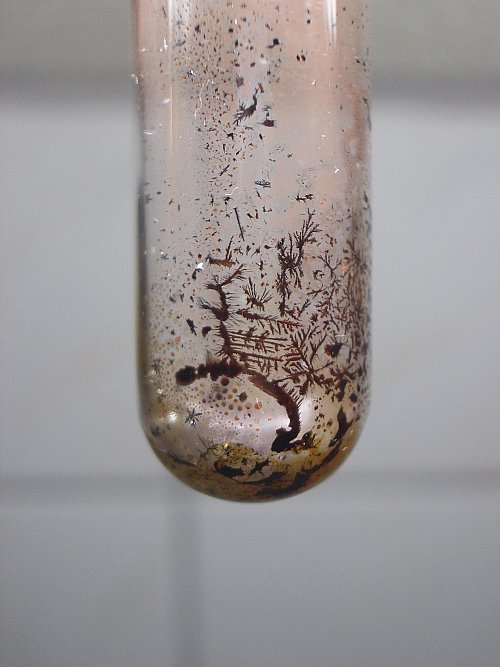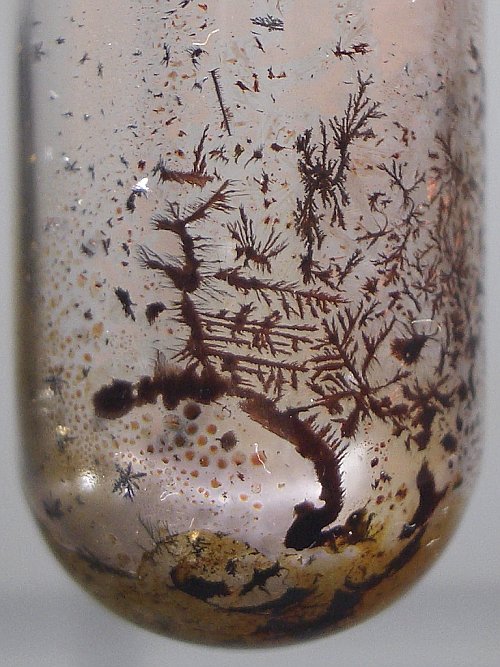


Decomposition of iodoform
Iodoform is a compound, which can easily be made from iodine, acetone and a hydroxide, using the so-called haloform reaction. The mechanism for this is as follows:
CH3COCH3 + 3OH– + 3I2 → CI3COCH3 + 3H2O + 3I–
CI3COCH3 + OH– → CHI3 + CH3COO–
This reaction also can be used for making chloroform and bromoform. However, with iodoform the isolation is easiest, because a compact precipitate is formed, which is easily isolated.
Here, a picture of a sample of iodoform is shown, which was made, using the reaction, given above.
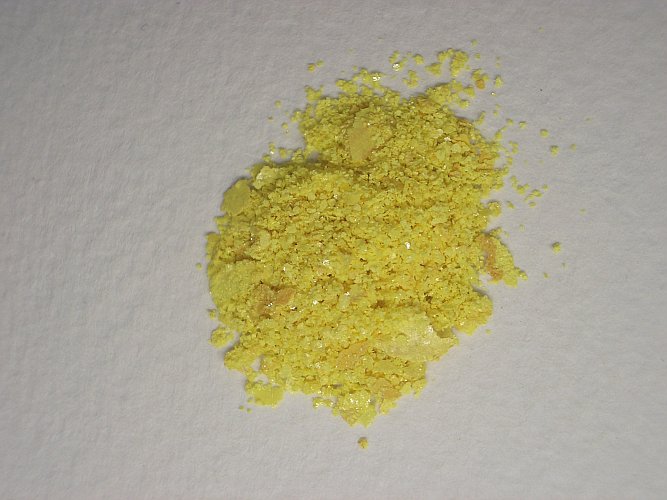
The sample, shown here, is approximately 1 gram of iodoform.
Iodoform is not a very stable compound. When it is heated, it decomposes. In this experiment it is shown how the decomposition looks like.
![]()
![]() Required
chemicals:
Required
chemicals:
-
iodoform
-
sodium sulfite
-
acetone
![]() Required
equipment:
Required
equipment:
-
test tube
-
burner for heating the test tubes
![]() Safety:
Safety:
- Iodoform has a pungent odor and is moderately toxic. Avoid inhaling too much of the vapor of this compound.
- In this experiment, iodine vapor is released. The amount is very small, but one can smell it. Iodine vapor is toxic and should not be inhaled. The amounts, released in this experiment, however, are so small, that it can be done inside, without the need of a real fume hood. Good ventilation, however, is strongly advised.
![]() Disposal:
Disposal:
- Add a spatula full of sodium sulfite to the contents of the test tube and add some water. This destroys all iodine. The liquid then can be flushed down the drain without problem.
- Now add a little amount of acetone to the test tube and rinse the test tube with this. This dissolves some remnants of the iodoform. Pour the acetone of the test tube on a tissue and let evaporate. Do this outside! The tissue can be regarded as normal household waste, when it is almost dry again.
- The test tube can further be cleaned with a brush.
![]()
Decomposition by heating
Put a very small amount of iodoform in a test tube and heat the test tube above a flame. Immediately, the iodoform seems to melt and produce a red/brown liquid, but almost at the same time, deep violet vapor of iodine is released. With further heating more iodine vapor is released and small crystals of iodine are deposited on the glass of the test tube. Remarkably, hardly any iodine escapes from the test tube. Only a weak odor of iodine is produced.
Below, four pictures are given, first with the iodoform and then after several stages of heating. It is remarkable how dark the vapor of iodine is. At a certain point it almost looks black.
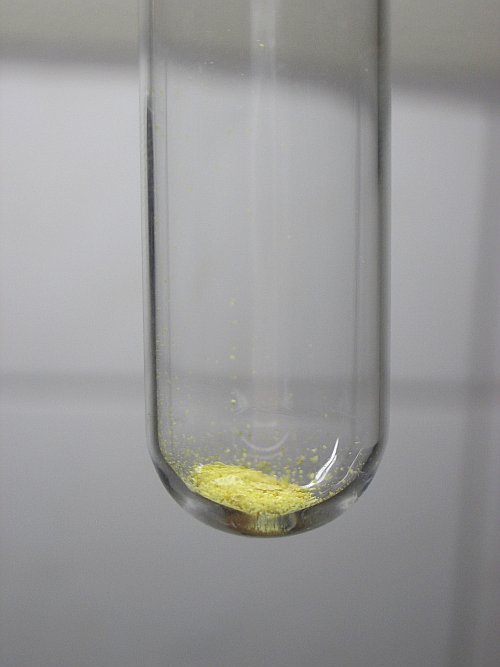
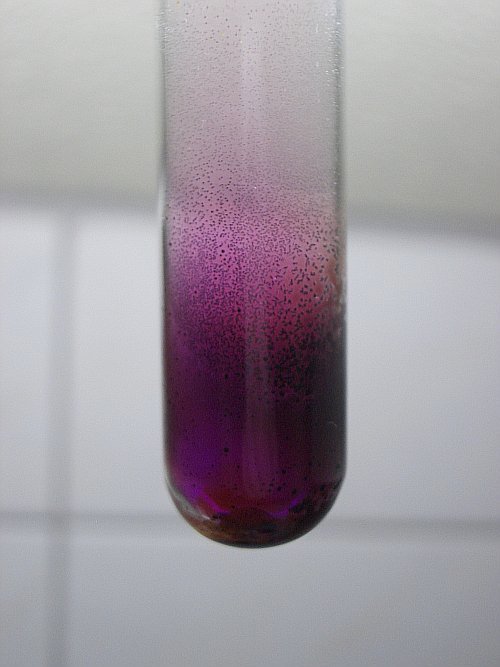
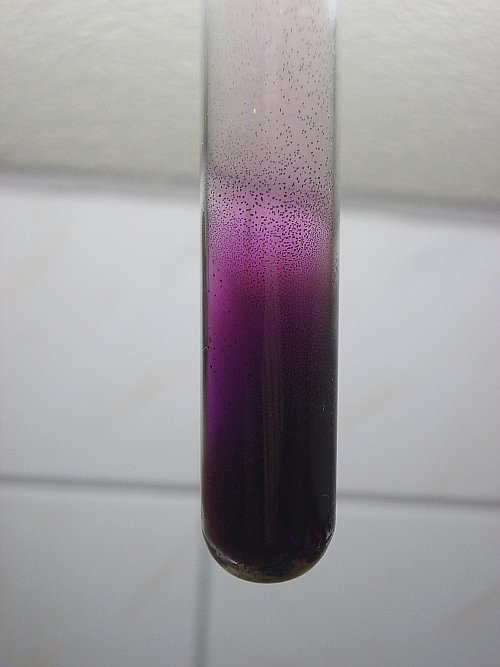
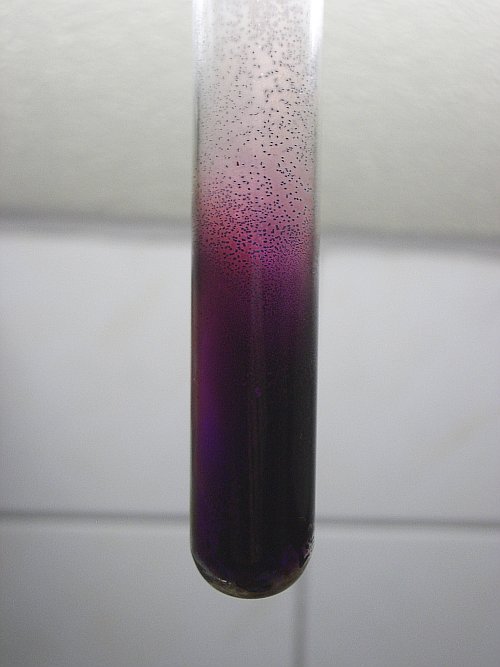
When the test tube is kept upside down, then a faint fuming can be observed near the open end of the test tube. No visible iodine vapor leaves the test tube (that is deposited on the glass), but apparently some HI-gas reaches the open end of the test tube and in the air this fumes (just as HCl does).
Next, let the test tube cool down again. This results in formation of beautiful crystals on the glass and the color of the vapor becomes less dark. Also all kinds of red and brown shades are produced on the glass. These probably are due to formation of HI or iodo-hydrocarbons. The two pictures below show the red and brown shades. They also show that the color of the vapor fades on cooling down.
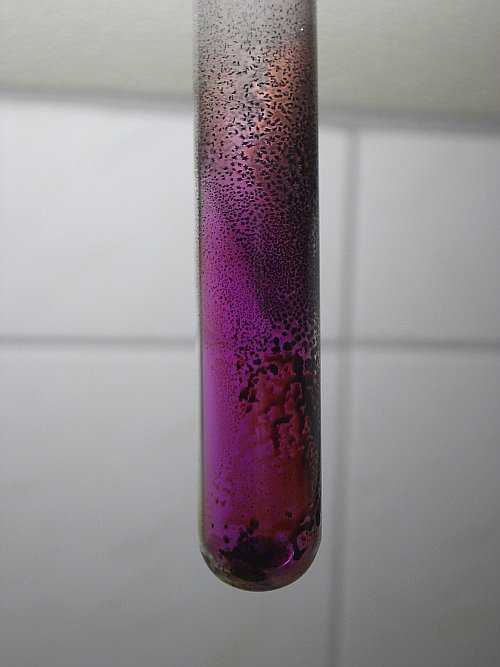
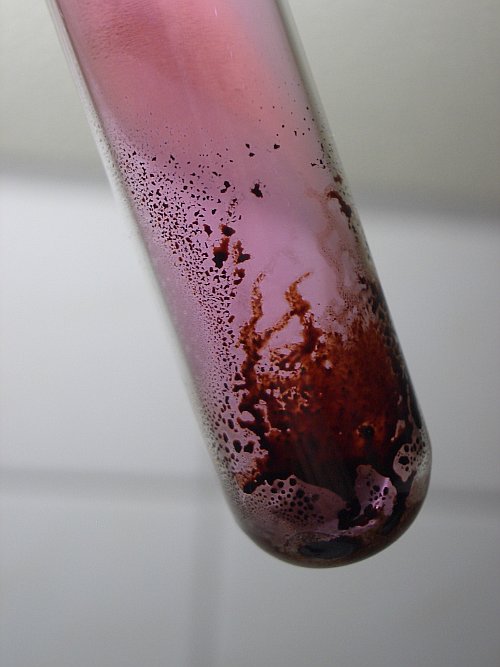
Finally, when the test tube has cooled down, there are really beautiful crystalline and dendritic patterns on the glass. The iodine forms featherlike crystals, the brown liquid, at the lower part of the test tube (shown clearly in the right picture above) solidifies and forms very peculiar dendritic structures.
The two pictures below show the feather-like crystals of iodine at the glass of the higher part of the test tube. The upper picture shows a large part of the test tube with the crystals inside, the lower picture shows a close up of the most beautiful structures on the glass.
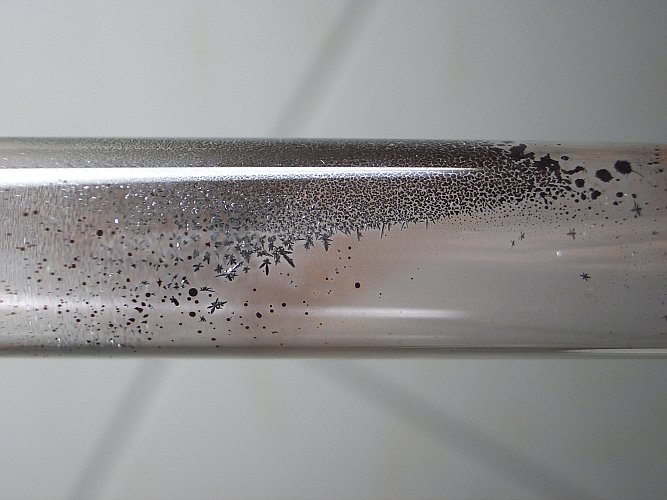
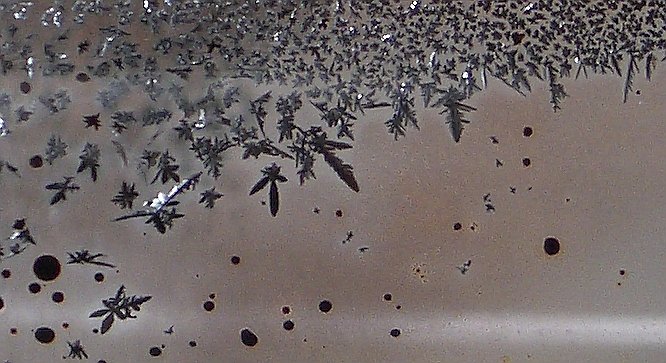
The following two pictures show the dendritic structures in the lower part of the test tube. These are even more remarkable than the crystals of iodine. Click on the pictures for a full size version. These pictures also show that there is still some iodoform, which is not decomposed. The glass also is covered irregularly by a very thin layer of a brown/pink substance. This substance is visible in almost the entire test tube.
Finally, a spatula full of sodium sulfite is added and some water is added. The sodium sulfite dissolves and all iodine dissolves. The liquid becomes colorless and solid black pieces of carbon are floating around in the liquid. The yellow iodoform, which is not decomposed remains at the walls of the test tube and does not dissolve.
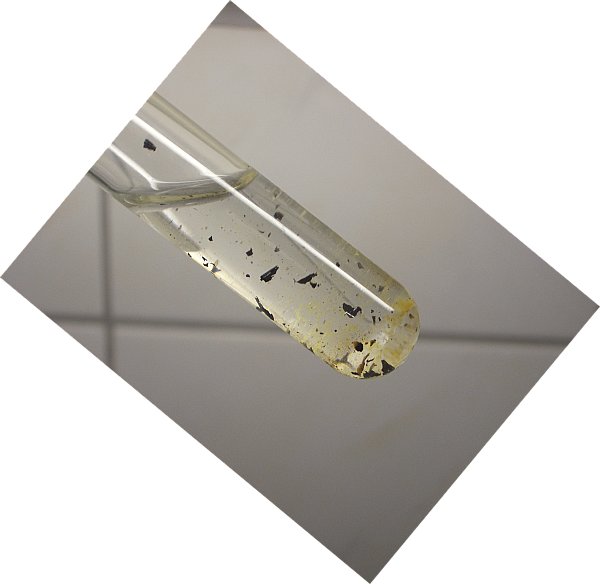
![]()
Discussion of results
Iodoform is not a very stable compound. It decomposes on heating and gives iodine (purple vapor), most likely some hydrogen iodide (fuming at open end of test tube) and elementary carbon (black stuff, which does not dissolve in aqueous Na2SO3).Probably higher hydrocarbons are formed as well in small quantities, with some hydrogen atoms replaced by iodine atoms.
The main reaction is expected to be:
CHI3(s,l) → C(s) + HI(g) + I2(g)
The iodine is given as gas in the main reaction equation. This is because the reaction is performed at elevated temperature.
